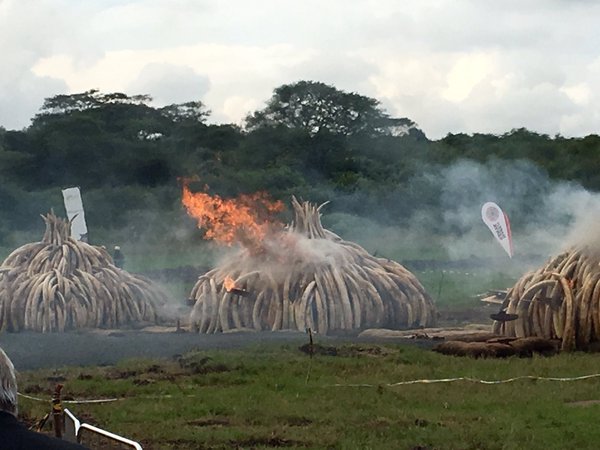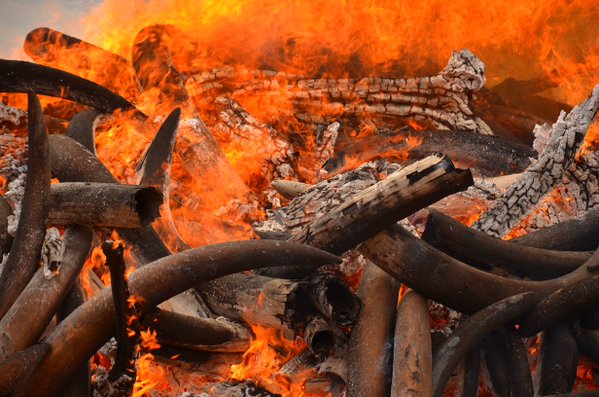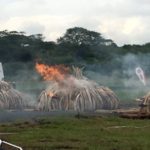Eleven giant pyres of tusks have been set alight as Kenya torches its vast ivory stockpile in a grand gesture aimed at shocking the world into stopping the slaughter of elephants.

Kenyan President Uhuru Kenyatta — who was the first to light the semi-circle of tusks expected to burn for days in Nairobi’s national park — has demanded a total ban on trade in ivory to end trafficking and prevent the extinction of elephants in the wild.
“To lose our elephants would be to lose a key part of the heritage that we hold in trust… Quite simply, we will not allow it,” Mr Kenyatta said at a meeting of African heads of state and conservationists.
“We will not be the Africans who stood by as we lost our elephants,” he added.
The historic bonfires were the largest-ever torching of ivory, involving 105,000 kilograms from thousands of dead elephants, dwarfing by seven times any stockpile burned before.
Another 1,350 kilograms of rhino horn were also burned, representing the killing of about 340 of the endangered animals.
Africa is home to between 450,000 and 500,000 elephants, but more than 30,000 are killed every year on the continent to satisfy demand for ivory in Asia, where raw tusks sell for around $1,315 a kilo.
The pyres prepared in Nairobi contain about 16,000 tusks and pieces of ivory.
Kenya has a long history of ivory burnings, spearheading a wider movement of public demonstrations across the world, but nothing on this scale before.
On the black market, such a quantity of ivory could sell for over $131 million, and the rhino horn could raise as much as $105 million.
Rhino horn can fetch as much as $79,000 per kilo — more than gold or cocaine.
Despite the staggering size of the piles to be burned, totalling around 5 per cent of global stocks, the ivory represents just a fraction of the animals killed every year.
The ivory seized from poachers and smugglers over several years — plus a small fraction from animals who died naturally — is equivalent to just a quarter of the number of elephants killed each year to feed demand in Asia.
The Convention on International Trade in Endangered Species of Wild Fauna and Flora (CITES) banned the ivory trade in 1989.
Activists say destroying the stocks will put anti-trafficking efforts at the top of the agenda at the next CITES conference.
China, which has tightened its laws on ivory imports, allows the resale of ivory bought before the 1989 ban, but activists say the trade in legal ivory acts as a cover for illegal imports and call for a complete ban on sales.
Ivory itself does not burn, and so the fire is fuelled by a mix of thousands of litres of diesel and kerosene injected though steel pipes buried in the ground leading into the heart of the pyramids
A former film special effects specialist turned pyrotechnic expert organised the fuel-fed fires, drawing on his expertise to ensure the stockpiles burn as planned despite torrential rain, and the area around the ivory burn a muddy quagmire.
Richard Leakey, Kenya Wildlife Service chief, said the ivory piles “will burn, even if it snows.”














